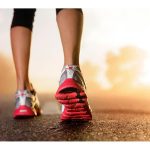
You can keep an arm in a cast from wasting away, researchers say, by working out your free arm. A small group of young men who performed eccentric contraction exercises with one arm — lowering a dumbbell in a slow and controlled motion — saw a 4% strength improvement in the other arm, even though it was immobilized by a cast at the elbow. Another group assigned to perform concentric contraction exercises — lifting a dumbbell — only lost about 4% of muscle strength in their immobilized arm, the study results showed. By comparison, a “control group” that did no exercises suffered a 15% decrease in their immobilized arm during the three-week study. It was already known that gaining muscle strength in one limb through resistance training will transfer to the same muscle on the opposite side of the body, said lead researcher Ken Nosaka. He is head of exercise and sports science at the Edith Cowan University School of Medical and Health Sciences, in Australia. “This is known as the cross-education effect,” Nosaka said in a university news release. “The key aspect of this study is one particular type of muscle contraction proved most effective.” For the study, 36 young men had their non-dominant arm immobilized by a cast at their elbow joint for three weeks. They were then split into three groups evenly:… read on > read on >



























-300x200.jpg)










